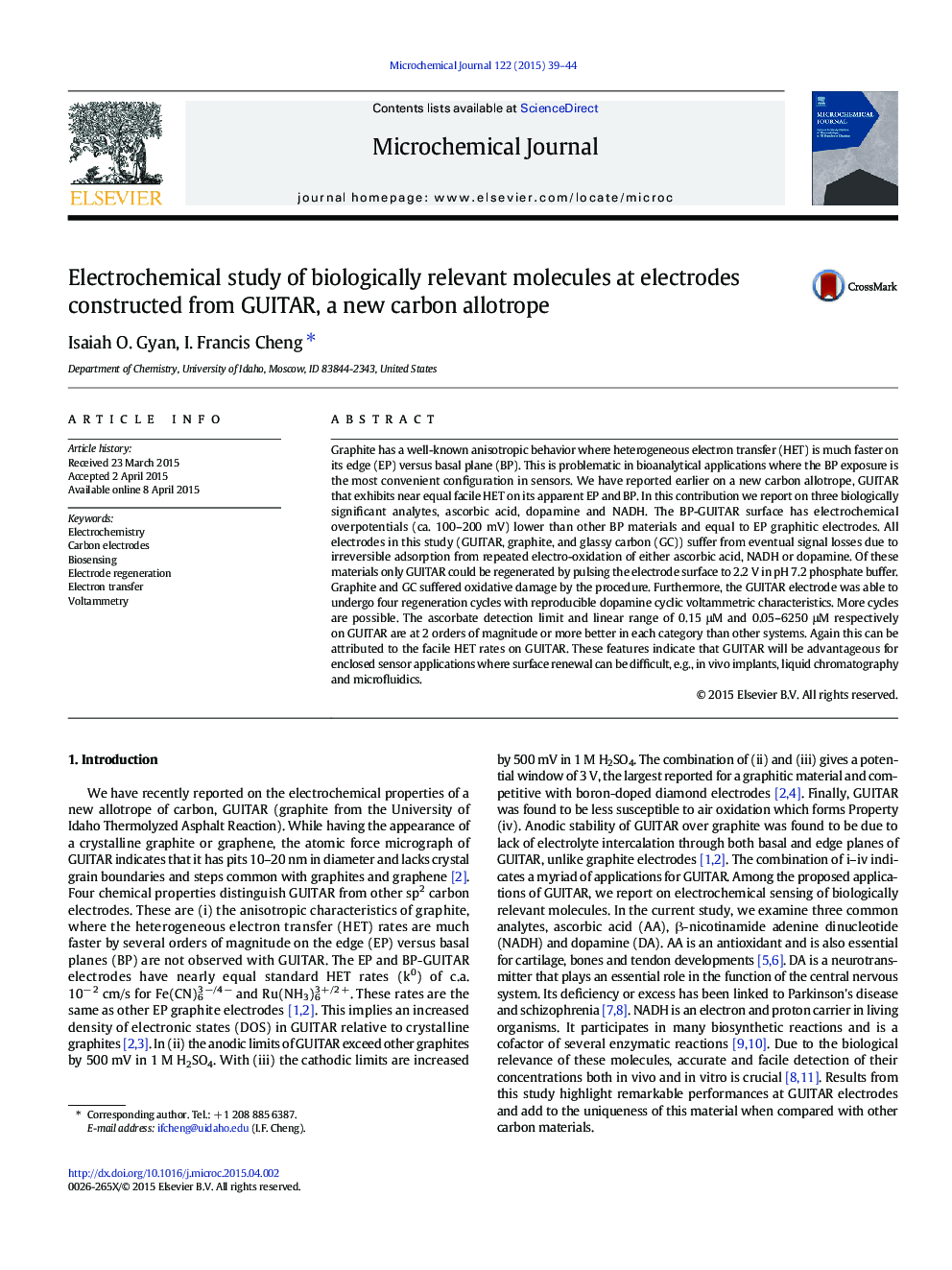| Article ID | Journal | Published Year | Pages | File Type |
|---|---|---|---|---|
| 1227757 | Microchemical Journal | 2015 | 6 Pages |
•New carbon allotrope (GUITAR) with increased density of electronic states•GUITAR has lower overpotentials for ascorbic acid (AA), dopamine and NADH oxidation than other electrodes.•LOD and linear range for AA detection was found to be 100x better than literature graphite and graphene materials.•GUITAR experiences less passivation from the biomolecules analysis relative to graphite and glassy carbon.•GUITAR can be regenerated several times with +2.2 V surface treatment. Other electrodes experience significant corrosion.
Graphite has a well-known anisotropic behavior where heterogeneous electron transfer (HET) is much faster on its edge (EP) versus basal plane (BP). This is problematic in bioanalytical applications where the BP exposure is the most convenient configuration in sensors. We have reported earlier on a new carbon allotrope, GUITAR that exhibits near equal facile HET on its apparent EP and BP. In this contribution we report on three biologically significant analytes, ascorbic acid, dopamine and NADH. The BP-GUITAR surface has electrochemical overpotentials (ca. 100–200 mV) lower than other BP materials and equal to EP graphitic electrodes. All electrodes in this study (GUITAR, graphite, and glassy carbon (GC)) suffer from eventual signal losses due to irreversible adsorption from repeated electro-oxidation of either ascorbic acid, NADH or dopamine. Of these materials only GUITAR could be regenerated by pulsing the electrode surface to 2.2 V in pH 7.2 phosphate buffer. Graphite and GC suffered oxidative damage by the procedure. Furthermore, the GUITAR electrode was able to undergo four regeneration cycles with reproducible dopamine cyclic voltammetric characteristics. More cycles are possible. The ascorbate detection limit and linear range of 0.15 μM and 0.05–6250 μM respectively on GUITAR are at 2 orders of magnitude or more better in each category than other systems. Again this can be attributed to the facile HET rates on GUITAR. These features indicate that GUITAR will be advantageous for enclosed sensor applications where surface renewal can be difficult, e.g., in vivo implants, liquid chromatography and microfluidics.
